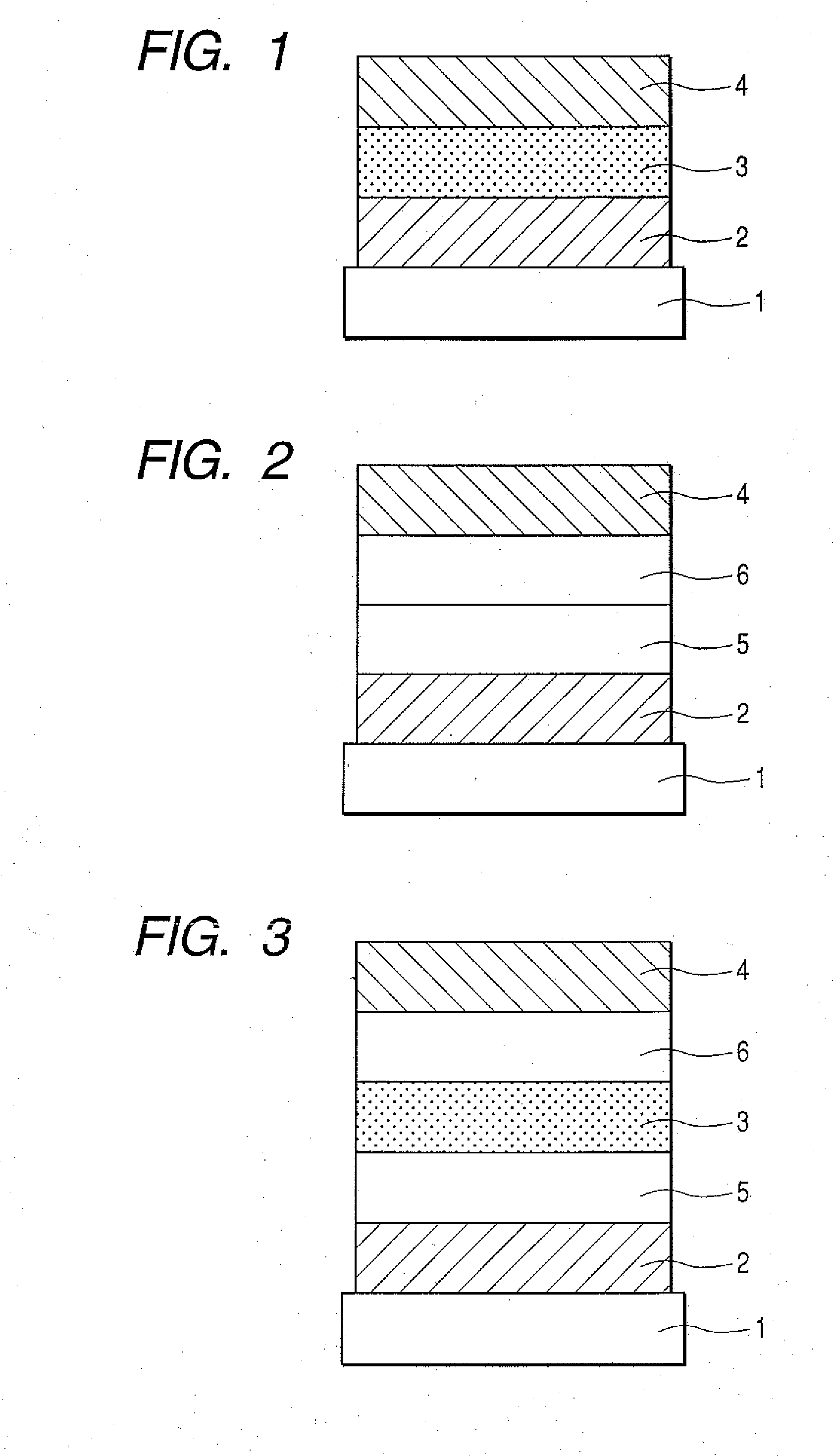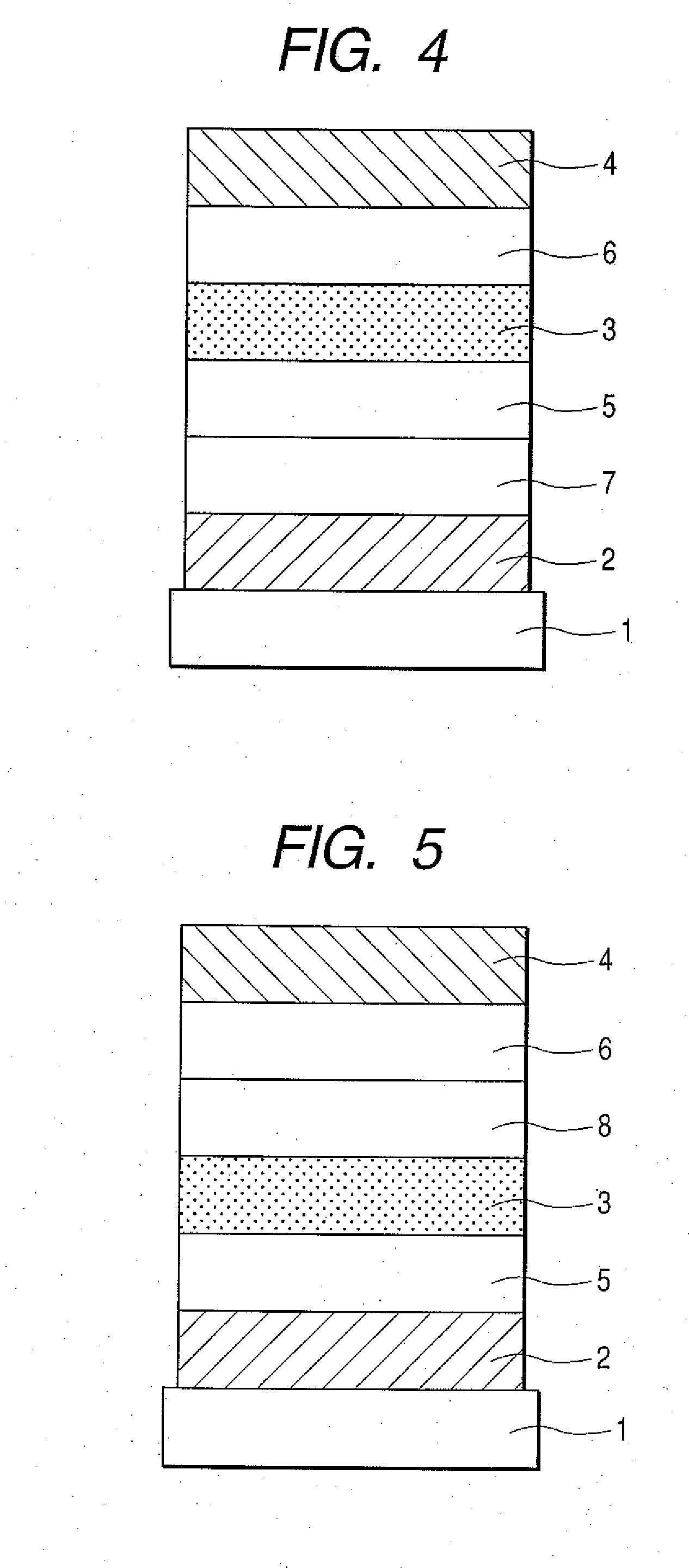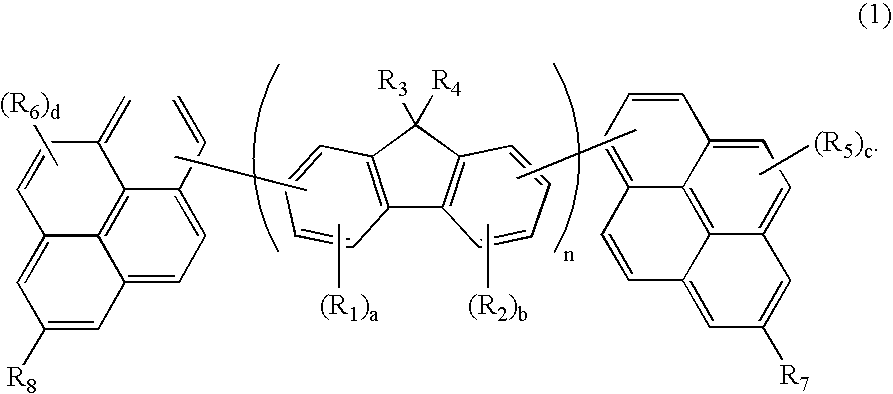Fluorenylene compound and organic light-emitting device using same
- Summary
- Abstract
- Description
- Claims
- Application Information
AI Technical Summary
Benefits of technology
Problems solved by technology
Method used
Image
Examples
Example
Example 1
Production Method for Exemplary Compound No. 1
[0112](1) Synthesis of Intermediate
[0113]Under a nitrogen flow, 2 g (5.01 mmol) of the below compound 1 and 2 g (5.01 mmol) of the below compound 3 derived from the below compound 2 were dissolved in a degassed mixed solvent consisting of 80 ml of toluene and 40 ml of ethanol, followed by stirring. The resultant mixture was added with an aqueous solution of sodium carbonate prepared by dissolving 1.1 g of anhydrous sodium carbonate in 15 ml of water. The resultant solution was stirred in an oil bath heated to 50° C., and then added with 289 mg (0.25 mmol) of tetrakis(triphenylphosphine)palladium. Under a nitrogen flow, the solution was heated with stirring for about 4 hours in an oil bath heated to 70° C.
[0114]The reaction solution was returned to room temperature, and toluene, ethyl acetate and water were added thereto. The organic layer was separated and dried over magnesium sulfate, and the solvents were evaporated. The resid...
Example
Example 2
Production Method for Exemplary Compounds Nos. 14 and 15
[0123]Exemplary Compounds 14 and 15 were produced by following the same procedure as in Example 1, with the exception that the below compounds 5 and 6 were used in place of compound 4.[0124]Compound 5: 2-(7-iso-propyl-3-methylpyrene-1-yl)-4,4,5,5-tetramethyl-[1,3,2]dioxaborolane[0125]Compound 6: 2-(7-adamantane-2-yl-3-methylpyrene-1-yl)-4,4,5,5-tetramethyl-[1,3,2]dioxaborolane
Example
Example 3
Production Method for Exemplary Compound No. 3
[0126]Under a nitrogen flow, 3 g (6.73 mmol) of the below compound 7 and 1.89 g (14.8 mmol) of the below compound 8 were dissolved in a mixed solvent consisting of 100 ml of toluene and 50 ml of ethanol, followed by stirring. The resultant mixture was added with an aqueous sodium carbonate solution prepared by dissolving 1.7 g of anhydrous sodium carbonate in 25 ml of water. The resultant solution was stirred in an oil bath heated to 50° C., and then added with 855 mg (0.74 mmol) of tetrakis(triphenylphosphine)palladium. Under a nitrogen flow, the solution was heated with stirring in an oil bath heated to 80° C. for about 5 hours.
[0127]The reaction solution was returned to room temperature, and toluene, ethyl acetate and water were added thereto. The organic layer was separated and dried over magnesium sulfate, and the solvents were evaporated. The residue was purified by silica gel column chromatography (toluene:heptane=1:3) to...
PUM
| Property | Measurement | Unit |
|---|---|---|
| Volume | aaaaa | aaaaa |
| Volume | aaaaa | aaaaa |
| Force | aaaaa | aaaaa |
Abstract
Description
Claims
Application Information
 Login to view more
Login to view more - R&D Engineer
- R&D Manager
- IP Professional
- Industry Leading Data Capabilities
- Powerful AI technology
- Patent DNA Extraction
Browse by: Latest US Patents, China's latest patents, Technical Efficacy Thesaurus, Application Domain, Technology Topic.
© 2024 PatSnap. All rights reserved.Legal|Privacy policy|Modern Slavery Act Transparency Statement|Sitemap



